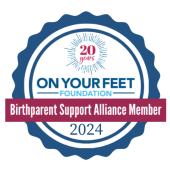What Is Required to Adopt a Child

Understanding Adoption Process Requirements
- Application Forms – Agencies often require prospective adoptive parents to apply to their adoption program in order to begin the process of becoming approved to adopt.
- Home Study – The home study is an assessment of the prospective adoptive family that indicates they are eligible to adopt. It is compiled from documentation submitted by the family and interviews completed by a licensed professional. Some of the home study documentation includes:
- Background Checks
- Medical Reports
- Financial Statements
- Consent or Surrender Forms – In cases of private or open adoptions, the birth parents sign legal consent or surrender documents which indicate they are placing their child for adoption.
- Adoption Petition – This is the formal request to the court, stating the adoptive family’s intent to adopt the child placed with them.
- Court Reports – During the post placement period, the agency will conduct visits with the adoptive family and child. A report to the court will be prepared, including a summary of the family’s adjustment and a recommendation regarding the finalization of the adoption.
- Finalization Order – At the conclusion of the post placement monitoring period, the court will issue a final order, declaring the child legally a member of the adoptive family.
Meeting Adoption Eligibility Criteria
- Age Requirements – Most states have a minimum age, often 21 or older, for adoptive parents. Agencies may also have policies regarding the age of adoptive parents in their program.
- Financial Stability – While a high income isn’t necessary, proof of financial ability to care for a child is often required.
- Background Checks – A clear criminal record, particularly regarding offenses against children, is a standard requirement.
- Emotional Readiness – Agencies may assess prospective adoptive parents’ preparedness through interviews and questionnaires.
Gathering Essential Documents
- Birth certificates of adoptive parents and household members
- Marriage or divorce certificates (if applicable)
- References from non-family members
- Financial documentation, such as pay stubs, tax returns, budget forms
- Medical reports for adoptive parents, household members, and pets
- Autobiographical statements outlining personal background and parenting philosophy
The Importance of a Home Study
- The physical living space
- Family dynamics and relationships
- Parenting experience and philosophy
- Financial capability
- Background check results
Completing Adoption Paperwork Step by Step
1. Initial Application
- Personal details (name, age, marital status)
- Employment and financial status
- Description of household members
- Contact information
2. Home Study Documentation
- Personal references from family members and friends
- Proof of identification
- Birth certificates
- Driver’s licenses
- Health and medical history forms
- Physician-signed medical reports
- Letters from therapist or specialist providers (if applicable)
- Proof of health insurance coverage
- Financial documentation
- Tax returns
- Pay stubs or proof of income
- Budget of monthly financial expenses
- Background checks
- FBI and state criminal records
- Child abuse and neglect registries
3. Birth Parent Consent or Surrender
4. Adoption Petition
- The adoptive parents’ personal information
- The child’s details (if identified)
- A statement of intent to adopt
5. Court Report
- A background history of the adoptive family and their eligibility to adopt
- A report on the child’s wellbeing since placement of the adoptive family
- A recommendation regarding the finalization of the adoption
6. Finalization Order
Tips to Streamline the Paperwork Process
1. Create a Paperwork Checklist: Having a detailed checklist with all required documents ensures nothing is overlooked. It can also help track deadlines and renewal dates for time-sensitive paperwork.
2. Keep Digital and Physical Copies: Maintaining both digital and hard copies of all paperwork helps prevent loss or misplacement. Some agencies require originals, while others accept scanned versions. Having everything organized in labeled folders makes it easier to access when needed.
3. Work with an Adoption Professional: An adoption agency or attorney can help ensure paperwork is completed correctly. They can also provide guidance on complex legal requirements and avoid common mistakes that could cause delays.
4. Submit Documents as Early as Possible: Many adoption requirements, such as background checks and home studies, take time to process. Starting early and submitting paperwork as soon as it’s completed can help keep the process moving forward without unnecessary delays.
5. Stay in Regular Contact with Adoption Agencies and Legal Experts: Checking in with adoption professionals regularly ensures any missing documents or updates are addressed quickly. Many agencies have caseworkers who can provide updates on paperwork progress and next steps.
Staying proactive and organized throughout the adoption process can help prevent delays and make the paperwork more manageable. By following these steps and working closely with adoption professionals, you can move forward with confidence, knowing that every requirement is being handled correctly.





